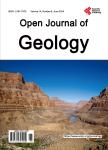Delineation of Lineaments in South Cameroon (Central Africa) Using Gravity Data
Delineation of Lineaments in South Cameroon (Central Africa) Using Gravity Data作者机构:Department of Physics Advanced Teacher Training College The University of Yaounde I Yaounde Cameroon
出 版 物:《Open Journal of Geology》 (地质学期刊(英文))
年 卷 期:2013年第3卷第5期
页 面:331-339页
学科分类:1002[医学-临床医学] 100214[医学-肿瘤学] 10[医学]
主 题:South Cameroon Bouguer Anomaly Upward Continuation Horizontal Gradient Euler Deconvolution Lineament
摘 要:Gravity method is among the most applied geophysical methods in mineral and oil exploration. It may help to identify fault networks which are of interest for mineral exploration. Potential field data can give valuable information on the location of faults in the basement. These faults may have propagated into the overlying sedimentary rocks and influenced fluid flow and distribution of hydrocarbon traps and mineralization zones. A study was therefore conducted in south Cameroon with the aim of highlighting the different lineaments of the region, which were completely or partially hidden by the sedimentary cover. Different gravity data processing techniques including horizontal gradient coupled with upward continuation and Euler deconvolution were used. The application of these methods has mapped out a number of lineaments depicting gravity density discontinuities whose directions are NS, NE-SW, EW and NW-SE. The predominant direction for major lineaments is NE-SW. The major lineaments associated to the faults are: the Kribi-Edea faults, Ambam faults, Ebolowa-south of Yaounde faults;Bipindi-Yaounde faults;Pouma-Yaounde fault and the fault system which crosses the east, north, west of Monatele city. Euler solutions indicate depths up to18 km for the roof of the faults. The main results worked out from this study provide with new elements that allow the improvement of the knowledge on the structure of the study area. The structural map obtained shows major tectonic events that are responsible of the structural layout of the study zone. In addition, information related to the dip and depth of the various structures was also obtained. The map of lineaments is a useful tool for the planning of hydrogeological and/or petroleum investigations.



